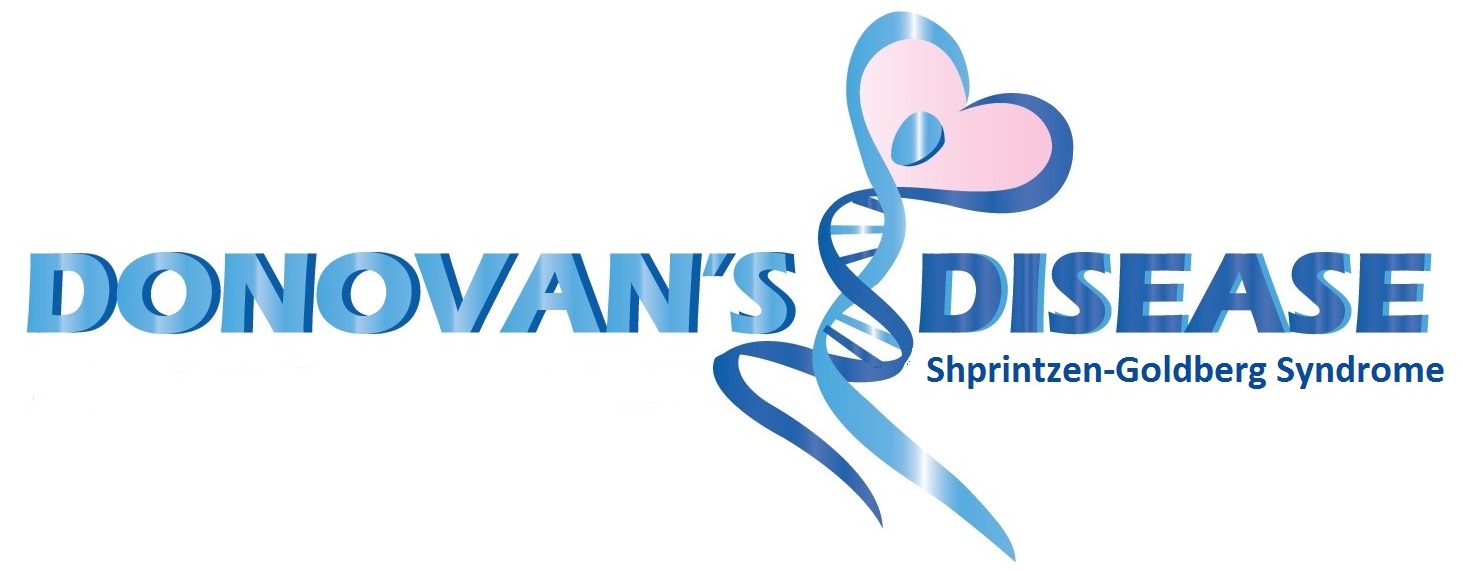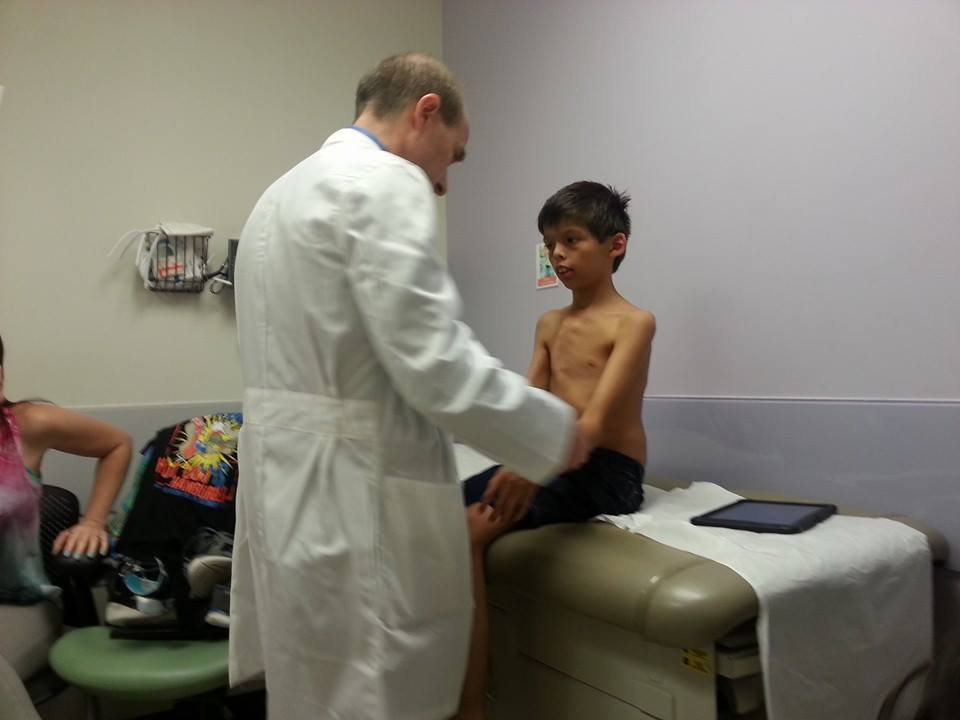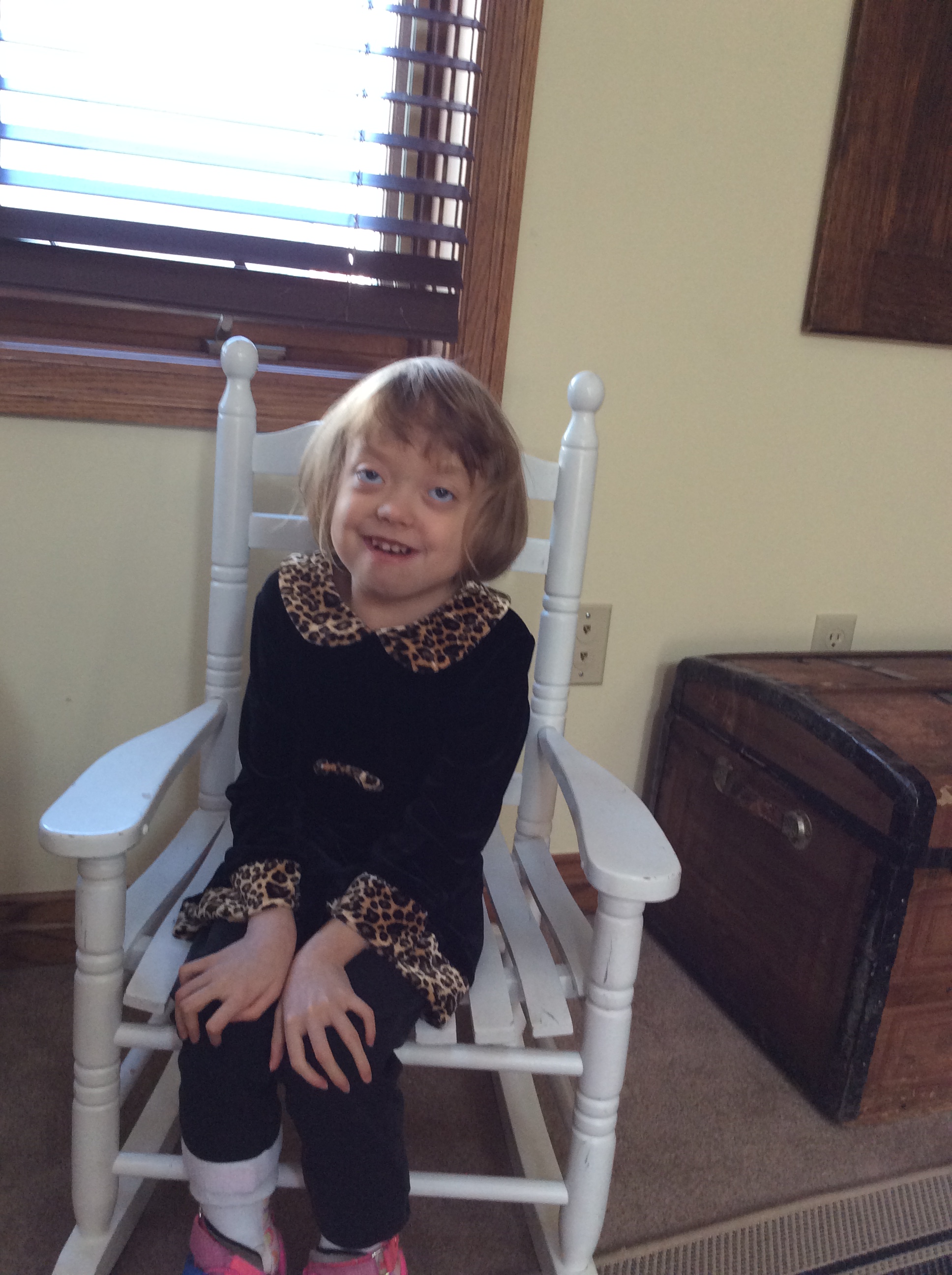
SHPRINTZEN-GOLDBERG FACTS
Shprintzen-Goldberg syndrome is often caused by defects (mutations) in the SKI gene. This gene provides instructions for making a protein that cause too much TGFbeta activity, which alters its function in tissue development and maintenance. The TGF-β signaling pathway regulates many processes, including:
- Cell growth and division (proliferation)
- The process by which cells mature to carry out special functions (differentiation)
- Cell movement (motility)
- The self-destruction of cells (apoptosis)
Facial features of Shprintzen-Goldberg syndrome include:
- A long, narrow head (dolichochephaly)
- High prominent forehead
- Widely spaced eyes (hypertelorism)
- Protruding or bulging eyes (exophthalmos, ocular proptosis)
- Wandering eye (strabismus)
- Outside corners of the eyes point downward (down-slanting palpebral fissures)
- A high, narrow palate (roof of the mouth)
- Under-developed jaw bones (maxillary hypoplasia)
- Small lower jaw (micrognathia)
- Low-set ears that are rotated backward
- Increased angle of the eyelids (telecanthus)
- Craniosynostosis ( early fusion of skull bones )
- Hypertelorism
- Molar Hypoplasia ( flat cheek bones )
- Broad or Split Uvula
- Cleft palate
- Proptosis
- Adnormal head shape
- Blue sclerae ( blue tinge of the white of the eyes )
Skeletal Features:
- C1/2 Spine malformation/ Instability
- Usually large range of joint movement ( Joint Hypermobility )
- Flat feet ( Pes Planus )
- Petcus deformity ( Petcus carinatum outward chest or Petcus excavatum sunken in chest )
- Scoliosis
- Kyphosis
- Lordosis
- Spondylolisthesis/ Anterolistheses
- Dural Ectasia
- Arachnodactyly
- Camptodactyly
- Hammer Toes
- Club foot
- Joint Contractures
- Marfanoid Habitus: long arms and legs for the size of the trunk; low body weight
- Winged Scapula
- Osteoprosis or Osteopenia :mild or severe problem with bone density)
- Joint dislocations
- Valgus foot deformities
- Joint inflamation
- Osteoarthritis (Joint Inflammation)
Features related to the heart and blood vessels include:
- Valve prolapse
- Valve regurgitation
- Aortic root enlargement/ Aneurysm
- Brain anomalies, including hydrocephalus (water on the brain)
- Dilatation (enlargement) of the lateral ventricles
- Chiari 1 malformation (brain tissue protrudes into the spinal canal)
- Mild to moderate intelectual disability
- Soft or velvety skin
- Translucent skin ( your able to see lots of veins )
- Weak muscle tone (hypotonia)
- A soft out-pouching around the belly-button ( Hernias)
- Adnormal or wide scarring
- Developmental Delay
- Gastrointestinal Issues
- Constipation
- Low body fat
- Easy brusing
How is Shprintzen-Goldberg syndrome managed?
Management of Shprintzen-Goldberg syndrome depends on the extent of the features. To evaluate severity, the following tests are recommended:
- Skeletal survey, including skull series
- Brain MRI
- Echocardiogram by a cardiologist
- CT/MRI of the vascular system
- Surgical evaluation for hernia repair, if a hernia is suspected
- Eye evaluation by an ophthalmologist
- Cervical spine flexion and extentsion x-ray
- Pulmonary function test
- Sleep Apnea test
- GERDS testing if acid reflux is suspected
Treatments may include:
- Surgical repair of aneurysms/disections
- Surgical repair/replacement of heart valves
- Surgical correction of craniofacial or chest problems are sometimes necessary or desirable.
- Shunting (surgical placement of a shunt to drain the accumulated fluid in the brain to the abdominal cavity to relieve pressure) may be required for patients with hydrocephalus (water on the brain)
- Occupational Therapy
- Physical Therapy
- Bracing for feet and spine
- Glasses
- Jaw surgery
- Braces on the teeth
- Surgical fusion of C1 and C2
- Medications
- Pediasure/ Insure for weight gain
- Feeding tube
Surgical intervention for constipation
(Chait Trapdoor Cecostomy)
It is now recommended that Shprintzen-Goldberg patients have an computed tomography angiography (CTA) or a magnetic resonance anigograhpy (MRA) from the head to pelvic every 2 years.
Echocardiograms should be performed annually.
Patients who have any aortic growth should be put on beta-blockers Atenolol or Losartan angiotensin receptor blocker.
X-Ray of neck and spine should be done annually as changes can occur quickly.
Eye exams should be done by a opthamologist who specializes in connective tissue disease annually.
Anyone who has been diagnosed with Shprintzen-Goldberg Syndrome should have a Bone Density Scan performed.

